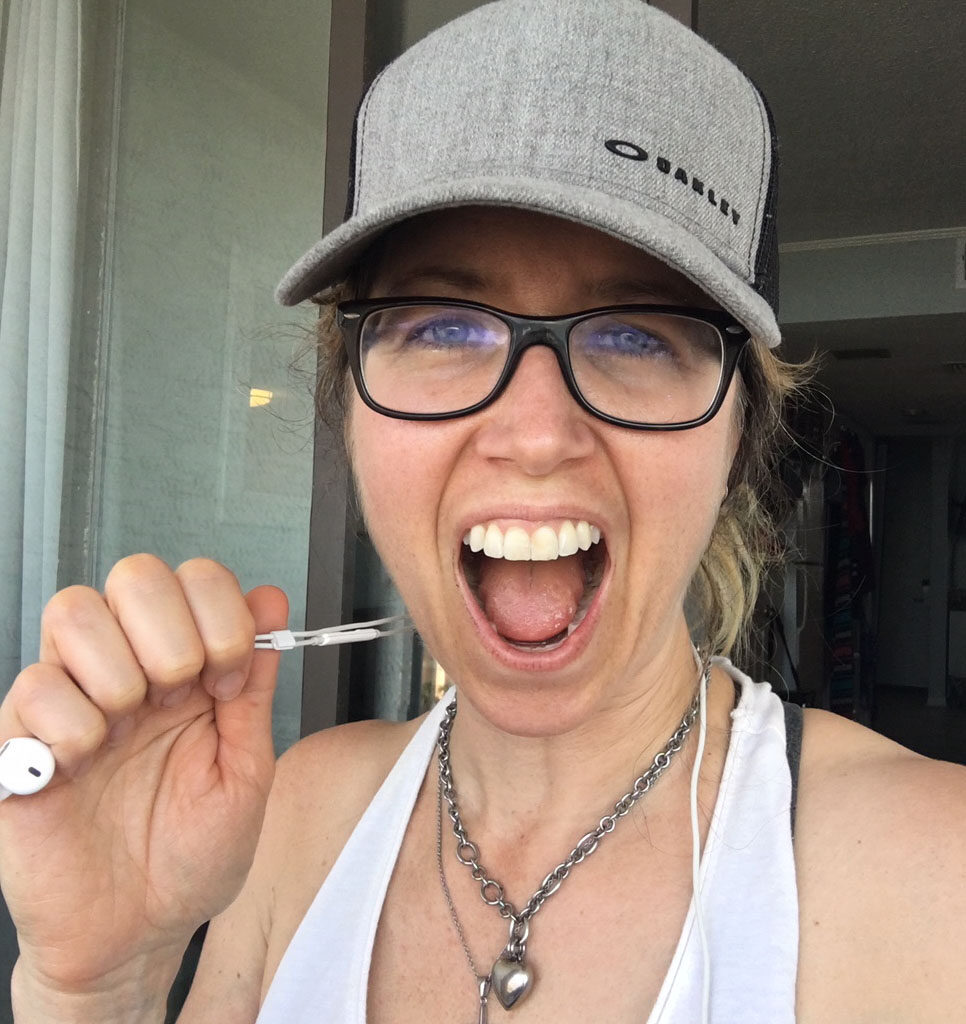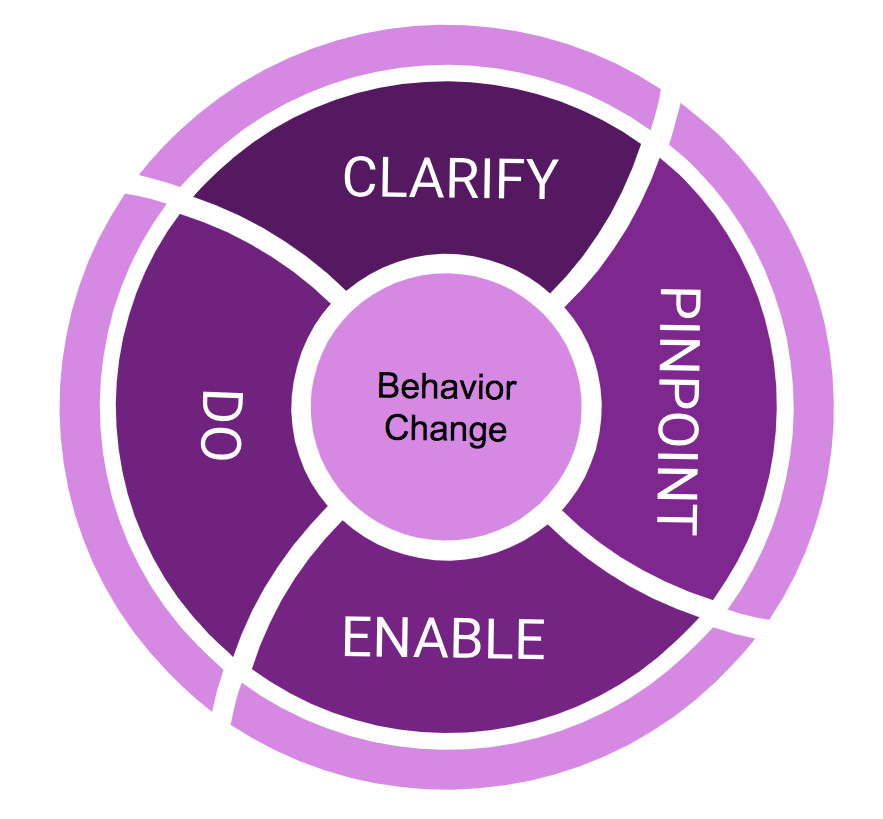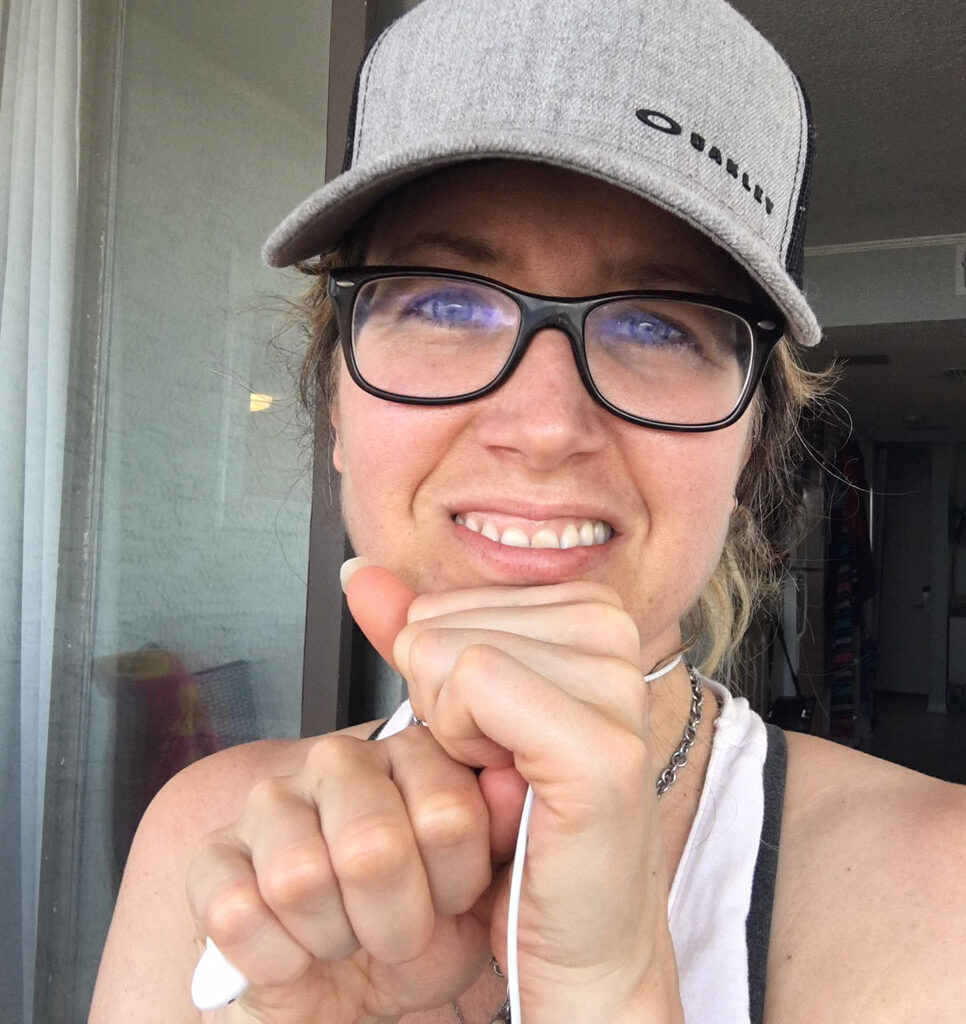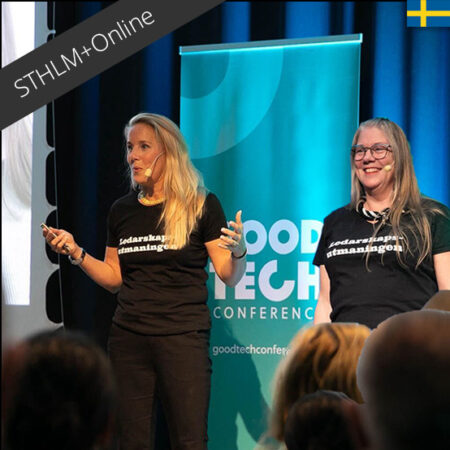My client is still happy.
My goal is to coach myself through a transformation from couch potato to marathoner (well, a half-marathon). It’s been life-changing.

Behavior science is the secret sauce
The barriers and obstacles I experience with “becoming a marathoner” are similar to those experienced by organizations wanting to “become agile”. The secret sauce lies in behavior science. Through this marathoning process, I’ve uncovered my own behavior-based twist of the Deming cycle and Lean Startup and am using them to inspire a Lean Performance Management model for teams and organizations. It’s always fun when personal and professional worlds collide!
The Behavior-Change Cycle
Below is the Behavior-Change Cycle I created for myself inspired by the Deming Cycle and how behavior scientists approach organizational change:

#1: Clarify
Clarify your context and objectives. What are you trying to accomplish? What does success look like? What is the gap between vision and reality? What’s your situational context? This step can include gaining clarity on the needs of internal and external customers and the prerequisites for success. Every organization, team, and person is different so clarification regarding current status and context is critical. Clarifying the mission, vision, and values can also happen here.
When it comes to marathoning, I spent about two weeks doing this for myself. The result was a clarified mission, vision, and understanding of where I’m at versus where I’d like to be.
#2: Pinpoint
Pinpoint the behaviors required to deliver a successful product/service to the internal/external customers, starting at the frontlines and working upwards. What behaviors are required at the frontlines to drive success? What behaviors are required at each organizational level to support frontlines employees and accomplish the organizational objectives? Engage each organizational level in this process. Such behaviors will be clarified and re-pinpointed over time as change happens inside and outside of your organization.
When it comes to marathoning, I researched the daily behaviors I need to drive success, such as running and clean eating, and then “zoomed out” to identify the more nuanced behaviors needed to sustain marathoning success, such as time and energy management. The result was a web of behaviors designed to support my running goals.
#3: Enable
Enable organizational success through creating the conditions that will naturally prompt and reinforce desired organizational behaviors that drive success. Unlike pinpointing, which starts at the bottom, enabling starts at the top with actions like process, policy, and procedure changes and works downwards to the operational level. The goal is to manage the system and not the people. By first removing limiting structures and sources of variability, people can be free to self-organize and operate within organizational constraints that naturally optimize the flow of work and deliver value to the customer. This can even include new resources or environmental arrangements that set people up for success. Transformation efforts will fall apart if people are asked to change at the operational level without enabling conditions in place.
When it comes to marathoning, my goal was to make my daily behaviors as easy as possible. I did this through (1) modifying my daily and weekly routines to optimize energy and productivity, (2) arranging my physical environment so “doing the right thing” was as easy as possible, and (3) and making my new behaviors as tiny as possible so I didn’t have to rely on motivation to change. The result was a drastic behavior change just by going through this enabling process. I started transforming even before I officially started training!
#4: Do
Do the behaviors and celebrate each win, no matter how small. When pinpointing happens in a way that’s collaborative and the right enablers are in place, behaviors that drive success will naturally happen. Kate Nelson from Change Guides LLC says “people support what they help create”, and that is especially true when it comes to behavior change. The people doing the work have the greatest insight into their work. Find out from them what they need to support actions that drive success. BJ Fogg, a behavior scientist from Stanford, says that behavior change happens when we “help people do what they already want to do” where “people change best by feeling good”. Find out what your people want to do when it comes to optimizing the flow of work, empower them to do it, and celebrate each win!
When it comes to marathoning, I’m finding that “doing” the right behaviors (i.e., running every day, eating healthy, sleeping better, etc.) are incredibly easy after proactively Clarifying, Pinpointing, and Enabling where I celebrate every small win and pivot as needed. Using sheer willpower to motivate myself through the discomfort of change, which is what I used to do, just doesn’t work. It’s not sustainable and puts me in a reactive posture when impediments were too easily derailing my efforts.
Rinse and repeat!

These four steps can be repeated every time conditions change and you find the need to re-clarify and re-pinpoint (which will naturally lead to new enablers and new actions). The process is essentially creating and then testing a hypothesis regarding the behaviors and conditions required to achieve the desired objective.
Deliberately moving through this iterative cycle has been the most powerful way I’ve experienced behavior transformation and it’s positively impacting my life and client work!
Now, Go Do It!
I’m sure you’re already doing a version of this cycle in your personal and professional life. For those who are like me and LOVE a challenge, I invite you to MOVE THE NEEDLE EVEN MORE by picking a personal goal you want to crush this summer asking yourself the following questions as outlined in the steps above:
- CLARIFY: Clarify your context and goal. What are you trying to accomplish? What does success look like? What is the gap between vision and reality? What’s your situational context?
- PINPOINT: What behaviors are required for bridging the gap between vision and reality? Brainstorm a list of behaviors required to get to your desired state. Such behaviors can include one-off actions or ongoing behaviors. Once you created a list of behaviors, identify those that will have the biggest impact, and are the easiest to do. For extra support, you can identify people in your environment and think about easy behaviors they can enact that could support your goals.
- ENABLE: How can you make your chosen actions and behaviors as easy as possible? What skills do you need? What tools and resources do you need? How does your schedule or routine need to change in order to support your behaviors? How can you arrange your environment so that the behaviors are as easy and rewarding as possible? How can you make the behaviors as tiny as possible? Are people in your environment willing to change their behaviors in order to support you? Check out BJ Fogg’s work on Tiny Habits for research-based insights regarding scaling down behaviors so they can easily turn into new habits!
- Do: Take action!
As crazy as it sounds, this process that behavioral scientists use for organizations worked brilliantly for me when pairing it with BJ’s work. I initially pinpointed 8 Tiny Habits and corresponding enablers, and for the first time in my life, I ran every day.
I’m excited to hear about the breakthroughs you will have using behavior science in your work and life. Share your transformation stories in the comments!


